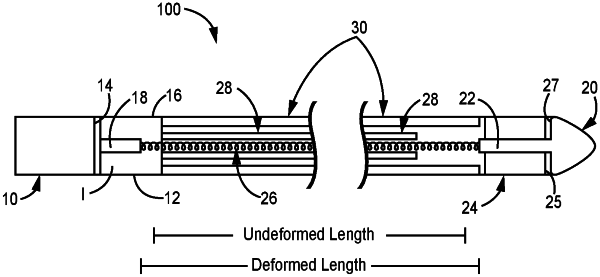| CPC A61B 17/320758 (2013.01) [A61M 60/804 (2021.01); A61M 60/818 (2021.01); A61B 2017/320775 (2013.01)] | 20 Claims |

|
1. A hemodynamic support device comprising: an electric motor having a rotational motor shaft and motor manifold at least partially surrounding the rotational motor shaft, the electric motor configured to rotate the rotational motor shaft;
a blood pump comprising an impeller, an impeller shaft and impeller housing at least partially surrounding the impeller and part of the impeller shaft; an elongated flexible drive shaft formed of a plurality of wire filars and having an undeformed length, a proximal end and a distal end, the proximal end of the drive shaft rotationally connected to the rotational motor shaft and the distal end rotationally connected to the impeller shaft;
wherein the elongated flexible drive shaft is deformed to a stretched configuration with a length greater than the undeformed length between the rotational motor shaft and impeller shaft to create a biasing build tension force between the impeller and the electric motor shaft, wherein the impeller resists movement in a distal axial direction within the impeller housing as a result of the biasing build tension force.
|